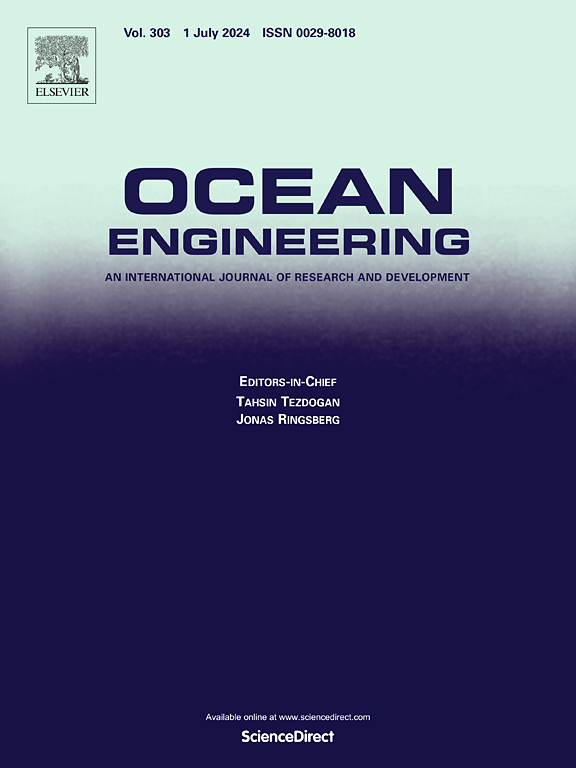Analysis of sea spray at various wave-course angles based on a speed-component towed SPH model
IF 4.6
2区 工程技术
Q1 ENGINEERING, CIVIL
引用次数: 0
Abstract
The primary source of water contributing to ship icing is sea spray from the interaction between ships and waves, making its analysis crucial for predicting icing events. This paper presents a speed-component towed smoothed particle hydrodynamics (SPH) model designed to investigate sea spray characteristics during ship-wave interactions at various wave-to-course angles. This approach addresses the limitations of existing sea spray models, which often assume that ships navigate directly into head-on waves. The study involves SPH modeling of the ship DTMB5415, facilitating simulations to examine interactions that generate sea spray. A threshold for SPH particle velocity distinguishes between sea spray and green water. The numerical results are validated by comparing the sea spray distribution on a medium-sized fishing vessel (MFV). Additionally, the model’s reliability is verified by comparing the shape and generation of sea spray for DTMB5415 in oblique waves at 5° and 10° angles. Simulations exploring sea spray generation across various wave-to-course angles show that as the angle increases, potential energy expenditure during wave climbing decreases, while sea spray volume generated increases nearly linearly.
求助全文
约1分钟内获得全文
求助全文
来源期刊

Ocean Engineering
工程技术-工程:大洋
CiteScore
7.30
自引率
34.00%
发文量
2379
审稿时长
8.1 months
期刊介绍:
Ocean Engineering provides a medium for the publication of original research and development work in the field of ocean engineering. Ocean Engineering seeks papers in the following topics.
 求助内容:
求助内容: 应助结果提醒方式:
应助结果提醒方式:


